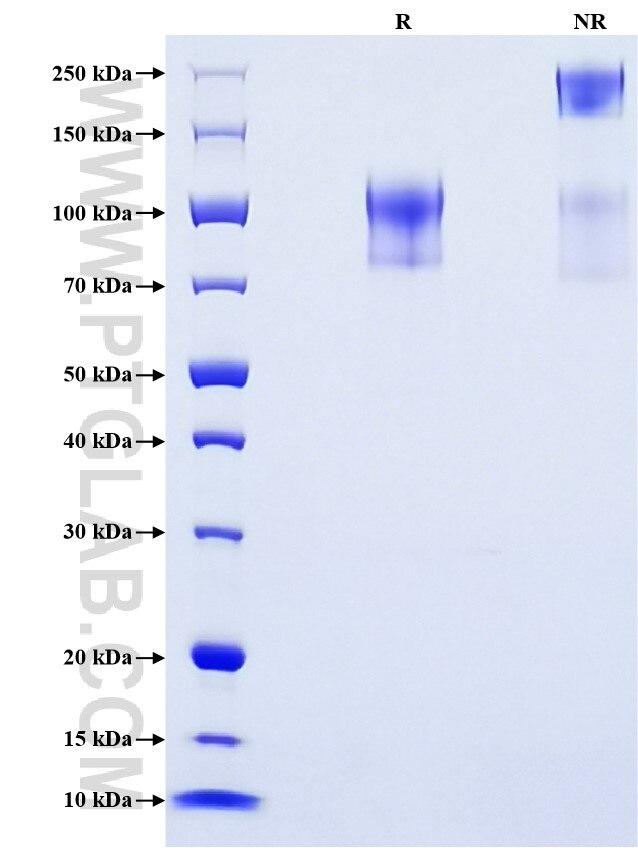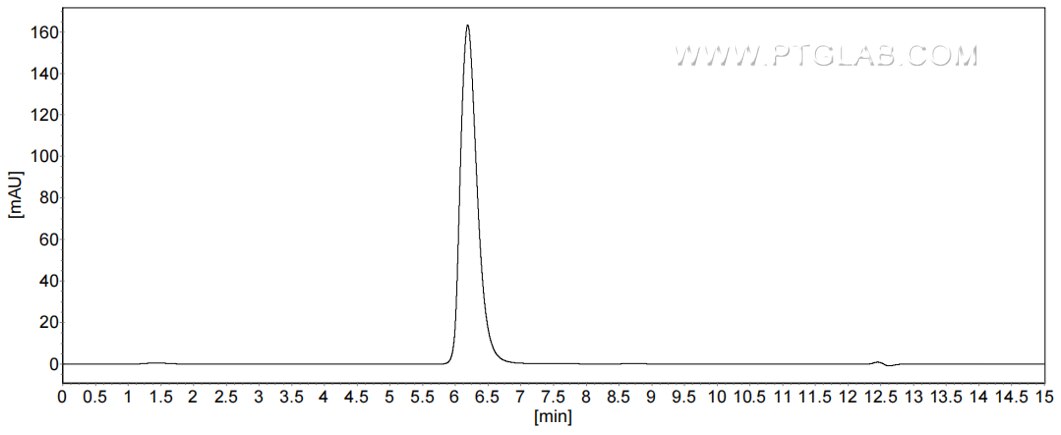Recombinant Human CD34 protein (rFc Tag)(HPLC verified)
Species
Human
Purity
>90 %, SDS-PAGE
>90 %, SEC-HPLC
Tag
rFc Tag
Activity
not tested
Cat no : Eg1800
Validation Data Gallery
Product Information
| Purity | >90 %, SDS-PAGE >90 %, SEC-HPLC |
| Endotoxin | <0.1 EU/μg protein, LAL method |
| Activity |
Not tested |
| Expression | HEK293-derived Human CD34 protein Ser32-Thr290 (Accession# P28906-1) with a rabbit IgG Fc tag at the C-terminus. |
| GeneID | 947 |
| Accession | P28906-1 |
| PredictedSize | 53.8 kDa |
| SDS-PAGE | 75-120 kDa, reducing (R) conditions |
| Formulation | Lyophilized from 0.22 μm filtered solution in PBS, pH 7.4. Normally 5% trehalose and 5% mannitol are added as protectants before lyophilization. |
| Reconstitution | Briefly centrifuge the tube before opening. Reconstitute at 0.1-0.5 mg/mL in sterile water. |
| Storage Conditions |
It is recommended that the protein be aliquoted for optimal storage. Avoid repeated freeze-thaw cycles.
|
| Shipping | The product is shipped at ambient temperature. Upon receipt, store it immediately at the recommended temperature. |
Background
CD34 is a 105- to 120-kDa glycophosphoprotein expressed on the majority of hematopoietic stem/progenitor cells, bone marrow stromal cells, capillary endothelial cells, embryonic fibroblasts, and some nerve tissue. CD34 is a commonly used marker for identifying human hematopoietic stem/progenitor cells and mediates cell adhesion and lymphocyte homing by binding L-selectin and E-selectin ligands. CD34 is also one of the best negative selection markers for characterizing and/or isolating human MSCs from bone marrow and other sources. Along with other positive selection markers (such as CD29, CD44, CD90, CD105 and CD166), negative selection markers (such as CD34 and CD45) are used for MSC identification. The calculated molecular mass of human CD34 is 41 kDa, various forms with different molecular weights may be produced due to different glycosylation patterns and alternative splicing.
References:
1. Reinhard Schwartz-Albiez, et al. (2004) Glycoconj J. 21(8-9):451-9. 2. Mahmood Shams, et al. (2013) Iran J Immunol. Dec;10(4):259-66. 3. Yoshiaki Sonoda. (2021) Exp Hematol. Apr:96:13-26.

